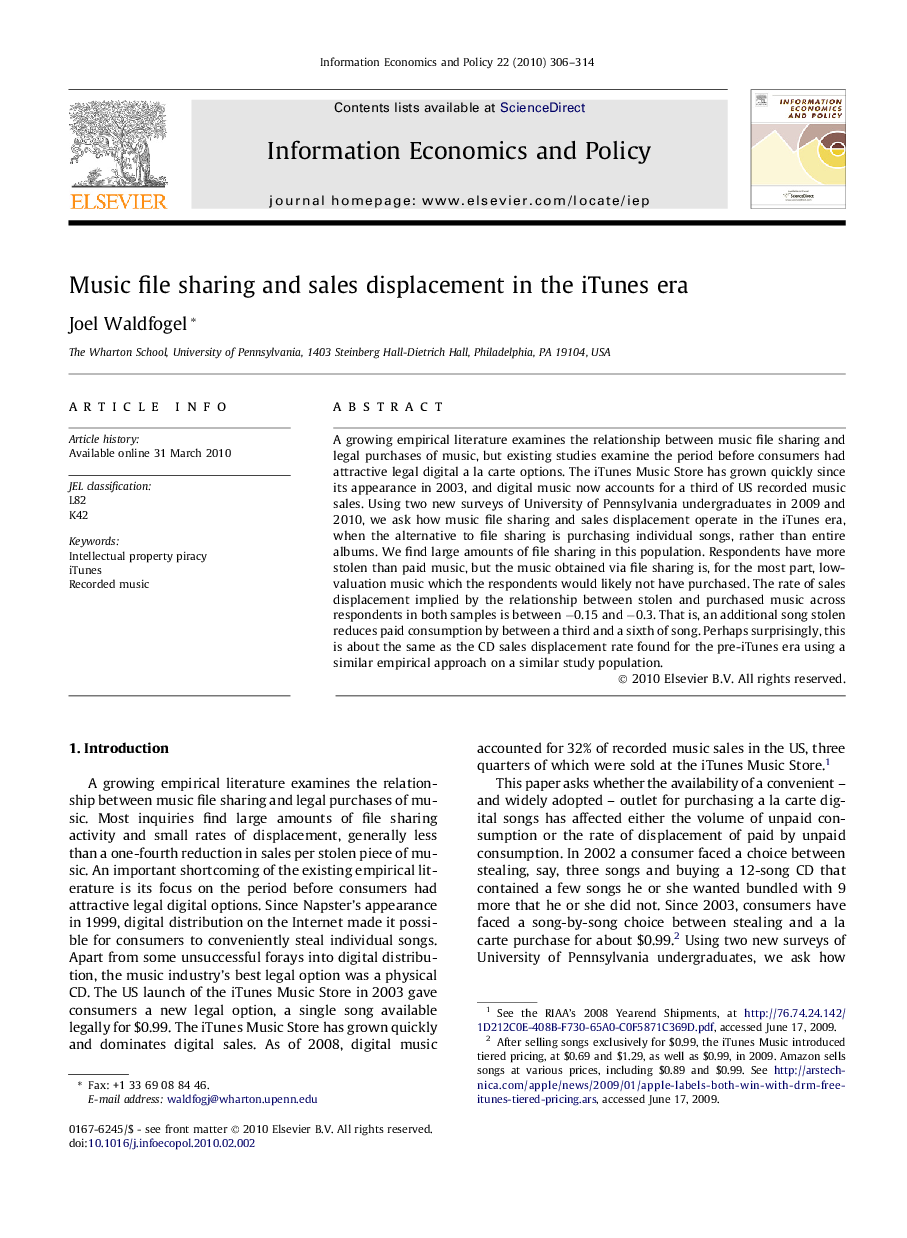| Article ID | Journal | Published Year | Pages | File Type |
|---|---|---|---|---|
| 5075816 | Information Economics and Policy | 2010 | 9 Pages |
Abstract
A growing empirical literature examines the relationship between music file sharing and legal purchases of music, but existing studies examine the period before consumers had attractive legal digital a la carte options. The iTunes Music Store has grown quickly since its appearance in 2003, and digital music now accounts for a third of US recorded music sales. Using two new surveys of University of Pennsylvania undergraduates in 2009 and 2010, we ask how music file sharing and sales displacement operate in the iTunes era, when the alternative to file sharing is purchasing individual songs, rather than entire albums. We find large amounts of file sharing in this population. Respondents have more stolen than paid music, but the music obtained via file sharing is, for the most part, low-valuation music which the respondents would likely not have purchased. The rate of sales displacement implied by the relationship between stolen and purchased music across respondents in both samples is between â0.15 and â0.3. That is, an additional song stolen reduces paid consumption by between a third and a sixth of song. Perhaps surprisingly, this is about the same as the CD sales displacement rate found for the pre-iTunes era using a similar empirical approach on a similar study population.
Related Topics
Social Sciences and Humanities
Business, Management and Accounting
Management of Technology and Innovation
Authors
Joel Waldfogel,
